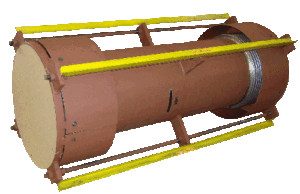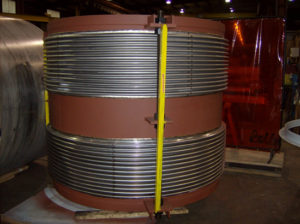The expansion joint is designed to accommodate all the needed displacements. The tie-rods are part of the expansion joint and designed to absorb all the specified displacements.

The expansion joint is designed to accommodate all the needed displacements. The tie-rods are part of the expansion joint and designed to absorb all the specified displacements.

Universal expansion joints are usually used when there is large lateral motion.
